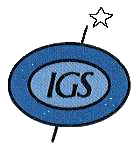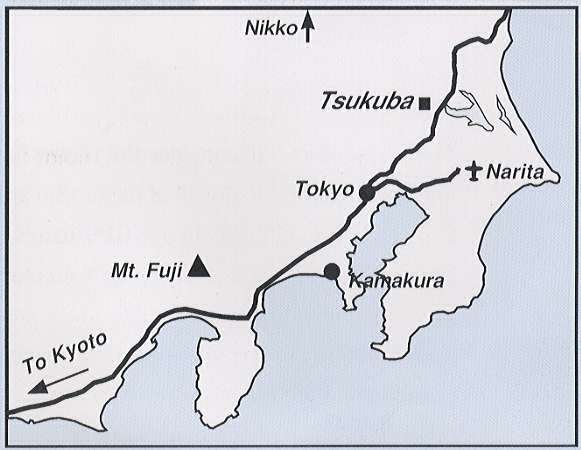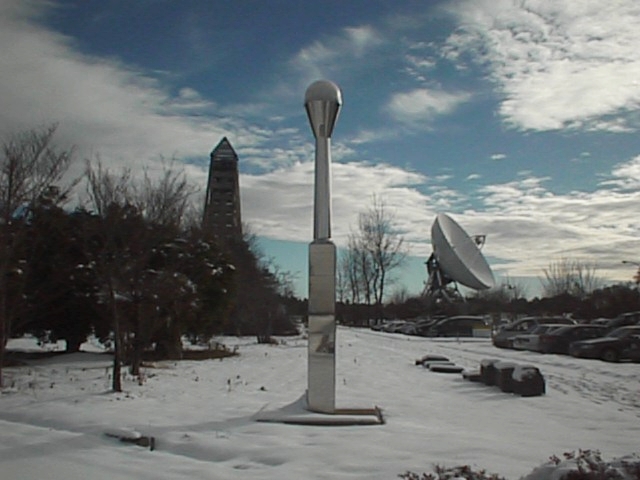

First Circular
The International Symposium on GPS
- Application to Earth Sciences and
Interaction with Other Space Geodetic Techniques -
[GPS99 in Tsukuba]
Period : October 18th (Mon.) - 22nd (Fri.), 1999
Place : Tsukuba International Convention Center,
Tsukuba, Ibaraki, Japan
A part of the symposium is dedicated to
The Third International Meeting of
the Asia-Pacific Space Geodynamics Program
Scope:
The symposium will consider the recent increase in GPS applications to
earth sciences. The Local Organizing Committee cordially invite all of those
who are interested in the following subjects;
 Crustal deformations by dense GPS arrays in Southern California, Japan etc.
Crustal deformations by dense GPS arrays in Southern California, Japan etc.
 Ground-based and space-based GPS meteorology,
Ground-based and space-based GPS meteorology,
 Investigation of ionosphere
Investigation of ionosphere
 Application to earth rotation studies; geocenter and reference frame etc.
Application to earth rotation studies; geocenter and reference frame etc.
 Combination of SLR and GPS
Combination of SLR and GPS
 Integrated space geodetic network using VLBI, GPS, GLONASS, etc.
Integrated space geodetic network using VLBI, GPS, GLONASS, etc.
 GPS and other techniques such as SAR, gravity measurements, etc.
GPS and other techniques such as SAR, gravity measurements, etc.
 Crustal dynamics in the Eastern Asia and the Western Pacific, and their
numerical modelling,
Crustal dynamics in the Eastern Asia and the Western Pacific, and their
numerical modelling,
 Physical process at plate boudary; slow earthquakes, superplume, backarc
spreading, etc.
Physical process at plate boudary; slow earthquakes, superplume, backarc
spreading, etc.
 Kinematic GPS for monitoring seismic waves, tsunamis, ice flow, sea bottom
displacements, etc.
Kinematic GPS for monitoring seismic waves, tsunamis, ice flow, sea bottom
displacements, etc.
 Local array for volcano and earthquake monitoring and hazard reduction
Local array for volcano and earthquake monitoring and hazard reduction
 Application of GPS for monitoring sealevel change
Application of GPS for monitoring sealevel change
 Collaborations between international projects; WING, APSG, GEODESSIA, etc.
Collaborations between international projects; WING, APSG, GEODESSIA, etc.
 Regional aspects and roles of the International GPS Service (IGS)
Regional aspects and roles of the International GPS Service (IGS)
 New and future space technologies and combination with conventional space
techniques
New and future space technologies and combination with conventional space
techniques
 Tutorial sessions for those who are beginning GPS researches, etc.
Tutorial sessions for those who are beginning GPS researches, etc.
Sponsors

Venue:
The symposium will be held in Tsukuba where the Geographical Survey
Institute operates the nationwide dense GPS array in Japan. The area is
conveniently located for visiting glorious old shrines in Nikko as well as
other scientific institutes. A couple of scientific and sightseeing tours
will be prepared by the Local Organizing Committee.
Symposium conveners:
 Michael Bevis, HIGP, University of Hawaii, USA
Michael Bevis, HIGP, University of Hawaii, USA
 Yehuda Bock, SIO, University of California San Diego, USA
Yehuda Bock, SIO, University of California San Diego, USA
 Oscar L. Colombo, University of Maryland/NASA GSFC, USA
Oscar L. Colombo, University of Maryland/NASA GSFC, USA
 Jeffrey T. Freumueller, Geophysical Institute, University of Alaska, USA
Jeffrey T. Freumueller, Geophysical Institute, University of Alaska, USA
 Yuki Hatanaka, Geographical Survey Institute, Japan
Yuki Hatanaka, Geographical Survey Institute, Japan
 Kosuke Heki, National Astronomical Observatory, Japan
Kosuke Heki, National Astronomical Observatory, Japan
 Bill Kuo, NCAR, USA
Bill Kuo, NCAR, USA
 Seiichi Shimada, NIED, Japan
Seiichi Shimada, NIED, Japan
 Randolph Ware, UCAR/UNAVCO, USA
Randolph Ware, UCAR/UNAVCO, USA
 Ye Shu-Hua, Shanghai Observatory, China
Ye Shu-Hua, Shanghai Observatory, China
 Shui-Beih Yu, Academia Sinica, Taiwan
Shui-Beih Yu, Academia Sinica, Taiwan
 Torao Tanaka (Chairman: Local Organizing Committee)
Torao Tanaka (Chairman: Local Organizing Committee)
Disaster Prevention Research Institute, Kyoto University
Gokasho, Uji, Kyoto 611-0011, Japan
Phone: +81-774-38-4225 Fax: +81-774-38-4239
e-mail:tora@rcep.dpri.kyoto-u.ac.jp
Those who are interested in obtaining further information about this
symposium are encouraged to send your name, address, phone/fax and e-mail
address to the following address;

 CSTG (Commission VIII in Section II of IAG and Commission B.2
of COSPAR)
CSTG (Commission VIII in Section II of IAG and Commission B.2
of COSPAR) IGS (International GPS Service of IAG and FAGS)
IGS (International GPS Service of IAG and FAGS) the National Committee of Geodesy, Science Council of Japan
the National Committee of Geodesy, Science Council of Japan the Geodetic Society of Japan
the Geodetic Society of Japan the Seismological Society of Japan
the Seismological Society of Japan the Volcanological Society of Japan
the Volcanological Society of Japan the Meteorological Society of Japan
the Meteorological Society of Japan the Japan Society for Marine Surveys and Technology
the Japan Society for Marine Surveys and Technology the Ocean Hemisphere Network Project
the Ocean Hemisphere Network Project the Superplume Project Research Group
the Superplume Project Research Group the GPS/MET JAPAN Project Research Group
the GPS/MET JAPAN Project Research Group


 Crustal deformations by dense GPS arrays in Southern California, Japan etc.
Crustal deformations by dense GPS arrays in Southern California, Japan etc. Michael Bevis, HIGP, University of Hawaii, USA
Michael Bevis, HIGP, University of Hawaii, USA